#bill-guisarme
Text

Do you like polearms? I know I do. Halberds, bec-de-corbin, Bohemian Earspoon, voulges, all types of bills, guisarmes... I remember reading through the tables in the 1E AD&D PHB and being amazed that they all had different stats. Whatever.
#dungeons and dragons#d&d#dnd#rpg#dungeon#osr#parody#ad#ad parody#advertisement#polearm#polearms#halberd#bec-de-corbin#bohemian earspoon#voulge#spear#pike#guisarme#bill-guisarme#necromancer
51 notes
·
View notes
Text
Vivian reads The Strategic Review Vol. 1, No. 2 (Summer 1975)
The issue starts with an editorial by Brian J. Blume, talking about how Tactical Studies Rules may one day become a large company, but for now is very small and made up of passionate gamers.
Cavaliers and Roundheads Rules Additions: This is not super relevant to me, but it is an example of how this isn't a D&D magazine yet.
Questions Most Frequently Asked About Dungeons & Dragons Rules: This seems like it would be very useful, since the original rules were very much not clear about many things. There's an example of combat that is frankly quite wild. A lone Hero is fighting 10 orcs in a dungeon, and two of them grapple him. The Hero beats their dice roll so he tosses them aside, stunning them. As far as I can remember, none of this is mentioned in the actual rules. On the next round the Hero scores two hits against the orcs, and dice are rolled to randomly determine which ones take the damage. Also depending on the Hero's position relative to the orcs, he might not be able to use his shield to defend. What fun!
Creature Features: We see the first appearence of another classic monster: the roper! The rules for its rope attack references turns rather than rounds, which feels like an oversight because surely it can't take the roper ten minutes to drag its victim ten feet towards itself.
Rangers: Here we have one of the game's most idiosyncratic classes for the first time. Starting with two hit dice? Check. Both clerical and magic-user spells? Check. Defining giant class monsters as including kobolds? Check! It's so weird. I love it. One thing that I'm pretty sure they dropped in AD&D was that until reaching 8th level, a ranger gets 4 experience points for every 3 normally earned. Just for being awesome, I guess.
Medieval Pole Arms: You ever wanted to arm your troops with bill-guisarmes? Well now's your chance! The article details twelve different polearms for Chainmail, which of course makes the article useful for those perverts who use the system for running D&D combat.
And that's about it! There's also an article about Panzer Warfare detailing unit organizations for various countries.
6 notes
·
View notes
Text
i hate people . okay btw i dont HATE but its annoying. it's annoying when people are very very pedantic about the terminology and typology of polearms. babe. The historical makers and users of these and the people who have described them historically Did Not Have A Consistent And Universal Typology And Terminology. a guisarme glaive is a glaive guisarme is a bill guisarme is a fucked up fauchard is a regular guisarme is a slightly weird bill is an early halberd. Theyre all just metal on a stick babe
4 notes
·
View notes
Text
Lore number 3
Since swiftly after the founding, they began developing technology. The most visible military technology are the Titans, mechs specially adapted to serve whatever purpose they were designed for. They were not necessarily for war, and certain models were for heavy lifting or construction. They also had Vagrants, huge, six-legged vehicles about the size of a small town. 4 of them roamed the wastes, going from Ceranthian city to city, serving as towns. Others were designed for war. Even Vagrants not made for war had cannons, to defend from armoured horrors. Ceranth also developed cannons, which were often equipped to Titans or Vagrants. They also had wheeled vehicles to serve as transport, whether supplies or people, and cities had very good public transport in the form of MagLev-style trains. The sands mixed in with the ash of the wasteland contains a significant amount of a metal that, when alloyed properly, can, depending on what it was alloyed with, could either channel/transport necrotic energy, or contain it. The alloy that can channel energy is what Starfall’s sword is made of. The alloys are not used that much, however. Instead, something called galvanic alloy is used, for wiring and weaponry, due to how it conducts and channels electricity so well, and can be made in either light or heavy varieties, with heavy variety serving for most weapons, and the lighter serving non-combat purposes, as well as weapons in which a light weight is desirable, such as rapiers. Armour is formed of a titanium alloy. Traditional Darastri weapons are rapiers and awlpikes. Traditional Halasi weapons use chains, such as spiked chains, chains with a weight on one or both ends, and chains with a grappling hook like head. These weapons are slow, so Halasi traditionally fight in pairs, one with a chain weapon, and the other with a shield and shortsword, or a rapier and offhand in modern day. Thavan people traditionally use bill-guisarmes, halberds, and glaives. Those who are descended from all three peoples often use a trident knife as an offhand when fighting with a rapier, to represent the three peoples.
0 notes
Text

Here I am ripping off Magritte again. A little in joke about D&D polearms. It's a bill guisarme, btw
0 notes
Note
I saw the guandao post and I was wondering if you could go into a bit more detail on the differences between the weapons (beyond their areas of origin) and what this means for how they're wielded?
DISCLAIMER: I am not an expert I’m just a fan of polearms and at times I can be wrong, but I have some knowledge. also be warned that while I uh, am looking stuff up to confirm the things I already know/get some more details esp wrt construction, I, admittedly, don’t feel the need to source everything since I don’t expect this to travel far enough to be a big deal. (famous last words, I know)
First of all, an admission: it is, in fact, not uncommon for guandao and similar “knife/sword-like blade on a stick” weapons to be called “Glaive weapons” which is something that has never sat right with me. So in regards to a “classification”/more generalized term, they’re technically not wrong. But at the same time, modern French uses the term “glaive” for short swords like the roman gladius. So, honestly, it’s a bit of an annoying term that categorizes too many different things while *also* referring to a specific weapon and I hate it used that way.
So, with regards to that, this is admittedly a largely personal linguistic beef that I stubbornly refuse to call things “glaive” in the broad sense and prefer the term “sword staff.”
Now, onto the weapons themselves. the most obvious difference between glaives and guandao is construction:
- Glaives have a more consistent/standard construction where they usually have a blade about 45cm/18 inches long and are affixed on a pole about 2m/7 feet long. It is wielded similarly to things like quarterstaves/halberds/bills/partisans. Between the size and the other weapons in its class you can kinda get the idea that it’s a weapon you aren’t doing fancy spin tricks with. The blade is affixed via socket-shaft and it’s a bit more of a chopping kind of deal with a bit of stabbing.
It also sometimes has a guisarme - a hook on the opposite side of the blade to catch riders and pull them off their horses. (can also be used from horseback). Guisarme is a term with two meanings - one for a weapon that was so incredibly effective that there were calls in the 13th century to be banned from the battlefield, and one that just is the term slapped on the back of any other weapon that had a hook on the side of their blades.
- Guandao has a lot more variation, and you have to account for if you’re referring to an older version of guandao or the more modern versions. Older ones usually had poles around 1.5-1.8m/5-6 feet and I can’t find anythig about the length of the blades but looking at examples there seems to be a LOT of variety. Some look less like what’s usually considered polearms and more just, giant swords. The ones that looked mroe traditionally polearm-y are rather similar to Glaives and, honestly? I’m pretty sure we don’t know how they were actually used in combat? There are conflicting sources on that, potentially due to the variety of their construction?
By the time of the Qing dynasty it wasn’t really used in battle anymore? which is possibly why most of the older ones are known to also be incredibly heavy since they were used for testing and lifting/moving extremely heavy weights was a thing they had officers do.
That one, obviously, is a more modern one which I’ve always found so distinct from Glaives that that’s why I always, hate it. Modern Guandao can have poles ranging from 1-1.5m/3 to 5 feet with blades between 30-45cm/12-18 inches long. It’s typically used by martial artist and is, I have heard, a great weapon for training/conditioning the body. I’ve always wanted one tbh even if I’m relatively certain I’d manage to injure myself trying to learn it.
A striking difference between Glaives and modern Guandao is the macehead on the opposite end, which also acts as a counterbalance to the blade.This is necessary for, well, everything the modern Guandao is used for. Its usage involves much more slashing and bashing and the idea is to always keep the blade in motion.
Certain schools of martial arts also affix cloths to the side with the macehead because they use the weapon more for disarming and confusing their opponents than actually attacking them. How accurate that is to its actual uses in battle is up for debate since the earliest knowledge of Guandao are uh, either tied up in Folklore (Supposedly invented & used by Guan Yu) or is otherwise debated (to my knowledge).
In conclusion: Modern Guandao is significantly cooler if you like drama, spins, and flashy fighting.
#I've been mostly on mobile the past few days bcs my chair broke#so I only just saw this and idk how long ago it's from since I know that post was in my queue somewhere#This isn't the most comprehensive but I am not an expert#And also definitely not procrastinating anything#No sireee
1 note
·
View note
Text
today on phrases that stuck in my head for years at a time: bill-bec-de-bardiche-glaive-guisarme
0 notes
Photo
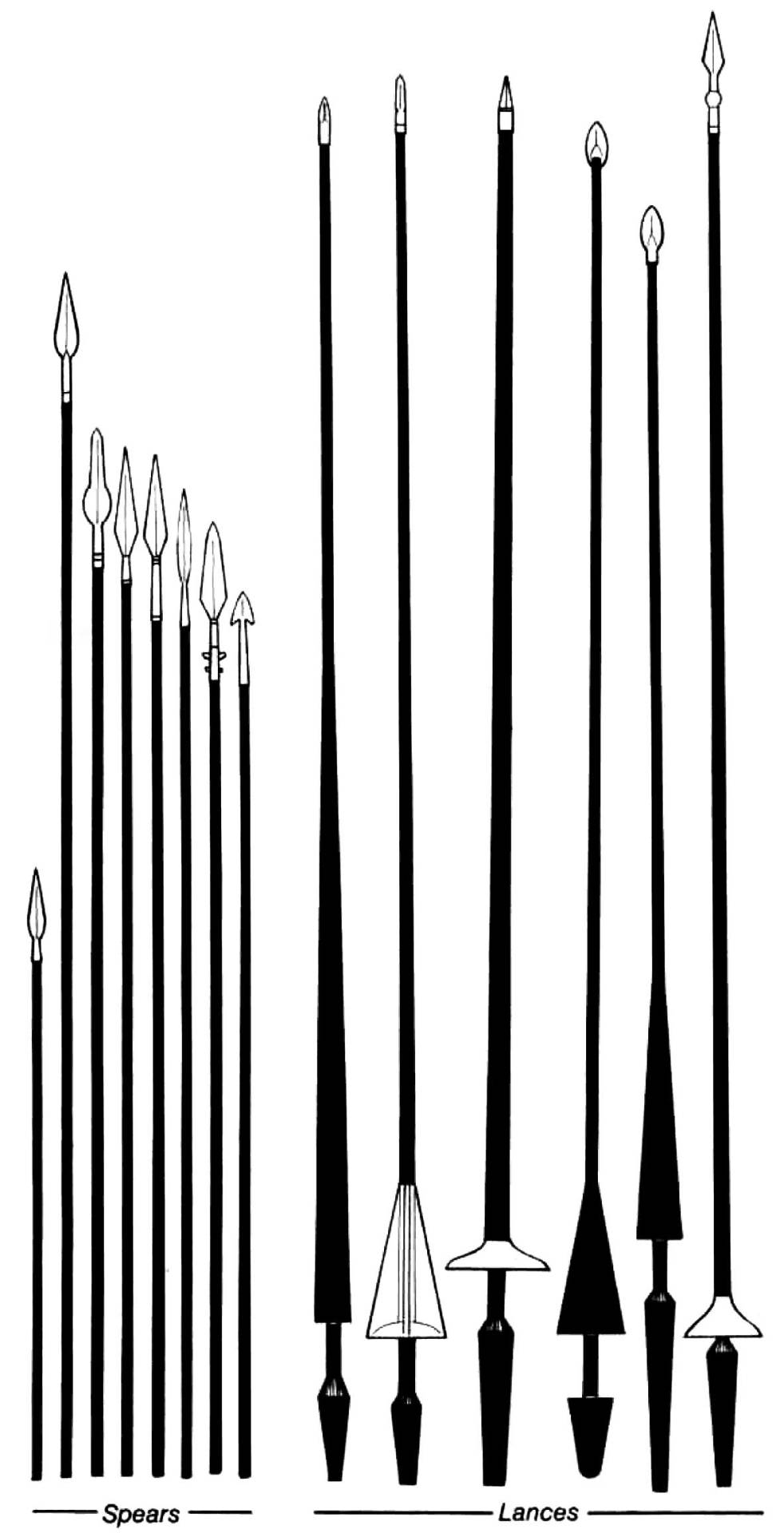

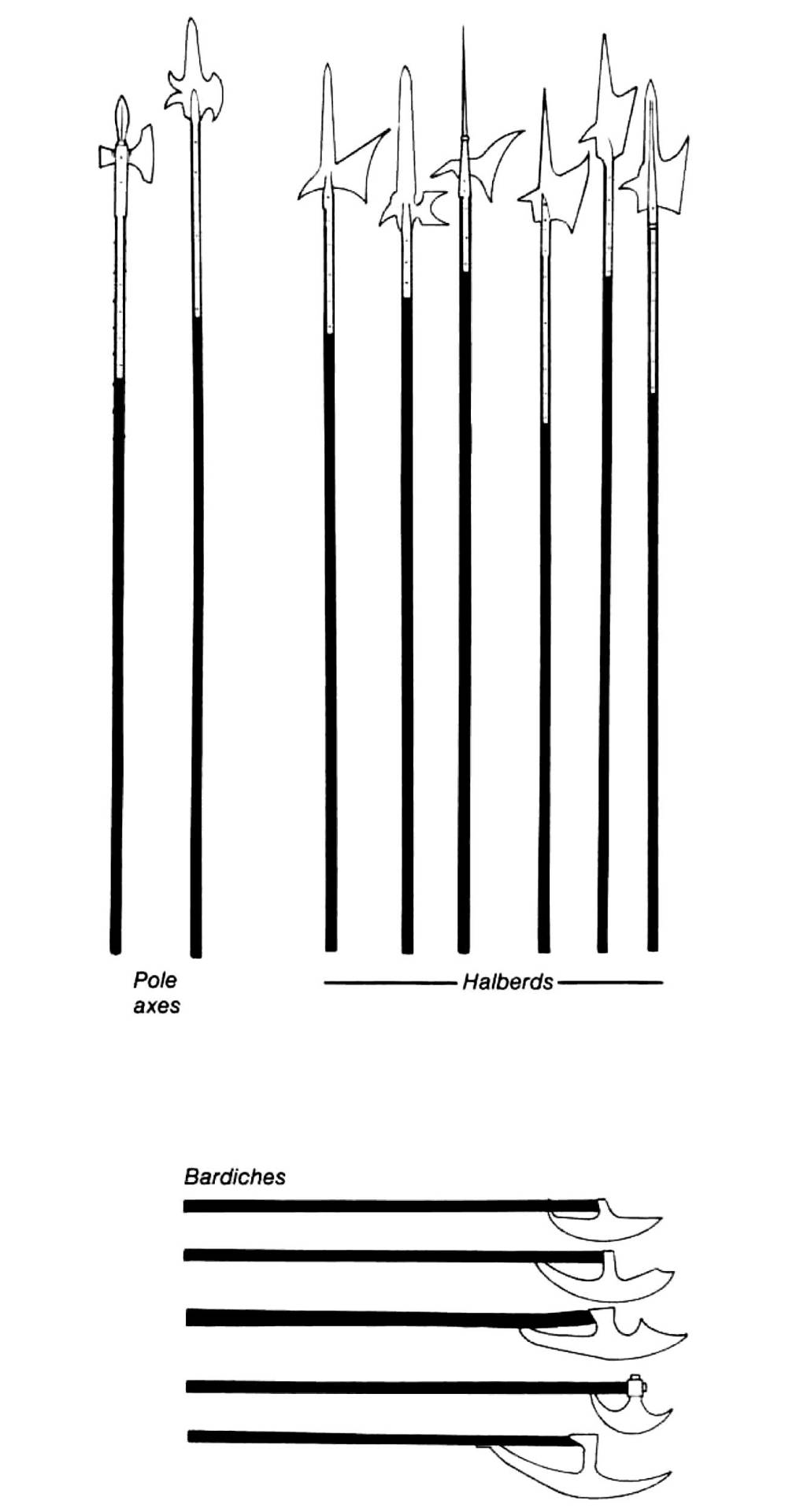
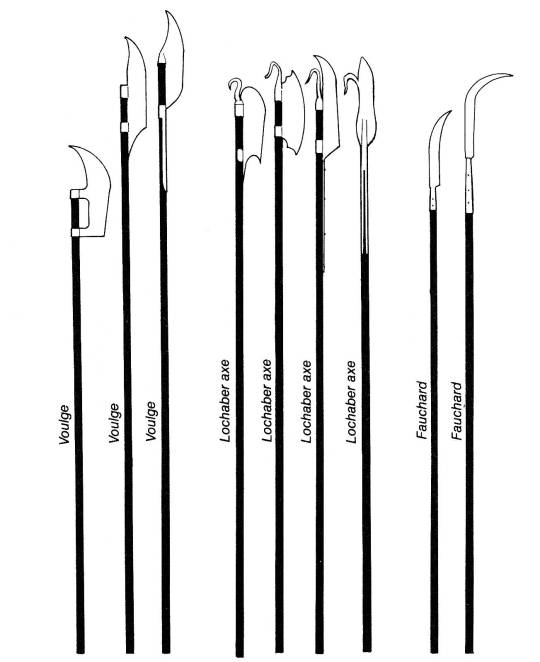

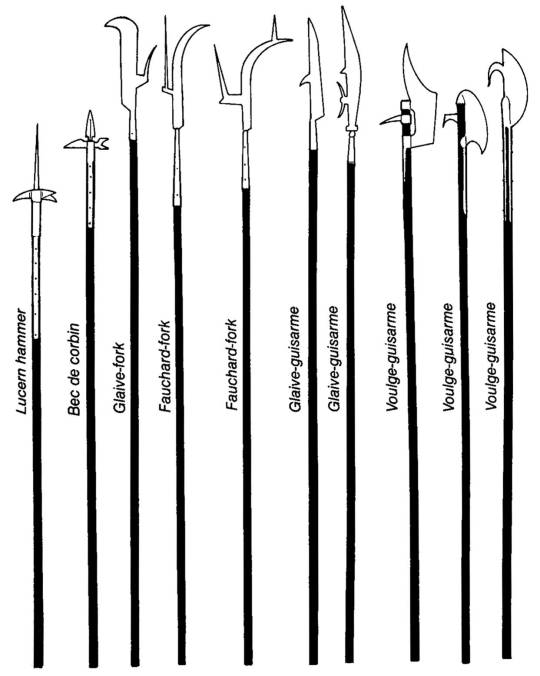
Encyclopedic polearm typology from Gary Gygax’s “Appendix T: The Nomenclature of Polearms” in Unearthed Arcana, TSR, 1985 -- ten years after his Strategic Review article, 7 years after listing all these names in the Players Handbook without explaining what he meant. Still no picture of the Bohemian earspoon, but his text describes it as a variant partisan.
#D&D#Dungeons & Dragons#Gary Gygax#polearms#medieval#AD&D#Unearthed Arcana#dnd#glaive#bill hook#guisarme#fauchard#voulge#bardiche#lochaber axe#pole axe#halberd#partisan#spear#lance#pike#Dungeons and Dragons#TSR
5K notes
·
View notes
Photo
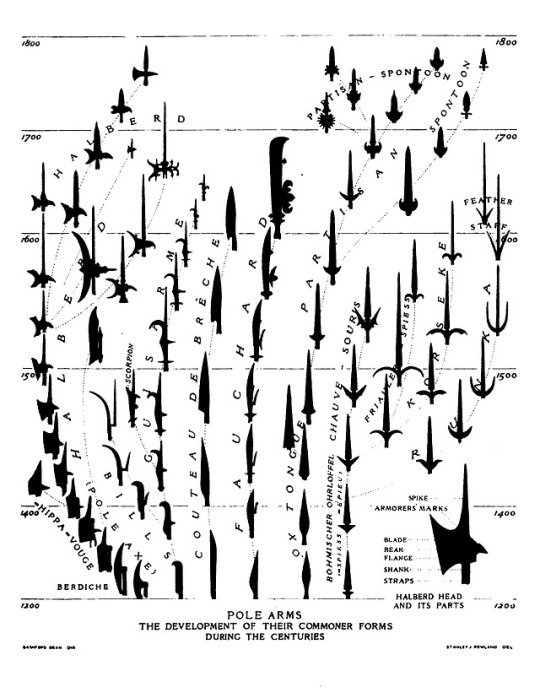
#polearms#pole arms#pike#bardiche#bill#halberd#guisarme#couteau de breche#voulge#fauchard#partisan#ranseur#weapons#bladed weapons#spontoon
34 notes
·
View notes
Text
Okrillimari
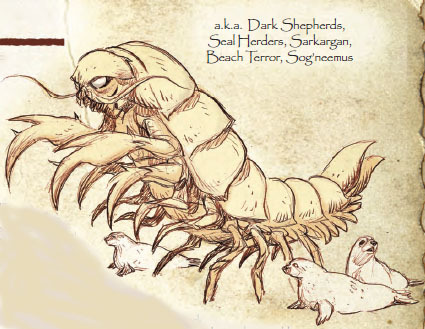
Image by Anthony Carpenter, © Kenzer and Co.
[Exhibit B as to why I think Hacklopedia of Beasts 2 remembers its comedy roots. This monster mashes up “krill” and “calamari” in its name, and can give your PCs something called “seal meat madness”. But it’s a dang good monster, one of the best fantasy parasitoids I’ve ever seen. As an aside, does anyone working for Paizo know what size a seal is supposed to be? The default seal is Small, which is really only appropriate for the two Asian lake seals (which are shorter but heavier on average than a wolf, which is Medium). Most seals are between 1.5 and 2 meters long and weigh as much or more than a human. So they should be Medium.]
Okrillamari
CR 5 N Magical Beast
This creature resembles a crustacean the size of a rhinoceros, each of its forelimbs shaped like the end of a polearm.
An okrillamari, also called a seal herder, is a giant parasitoid amphipod that lays eggs in seals and guards them from other predators, up to and including humanoids. Its foreclaws are the size and shape of the business end of a bill-guisarme, but it uses them primarily for defense rather than hunting. Okrillimari are omnivorous scavengers, and much of their diet comes from seaweed, driftwood, tide pool animals and even the feces of their seal charges. Their jaws are relatively weak, but contain potent paralytic enzymes. Most creatures they paralyze they leave behind, but a seal is injected with a slurry of eggs and microbes carried in an ovipositor. Seals and other pinnipeds that consume such a mixture become hosts for the next generation of okrillimari, which grow inside the animal for three months before bloodily emerging. The eggs cannot develop inside of any other creature, but they do cause increasing irrational behavior and eventually dangerous delirium. This “seal meat madness” is most commonly experienced by creatures that eat a seal hosting okrillimari eggs.
A seal herder is treated as an alpha by infected pinnipeds, and the animals behave favorably towards it even as their young kills the animal slowly. By concentrating, an okrillimari can see through the eyes of seals hosting its young, and thus are able to monitor a wide span of beach and ocean nearby. Okrillimari are simultaneous hermaphrodites that fertilize each other when they cross paths, but otherwise usually ignore others of their own kind. They can apparently smell the eggs inside a seal, and so do not attempt to parasitize a pinniped already hosting okrillimari eggs.
An okrillimari is most comfortable on the shoreline, but can remain on land or underwater indefinitely. Rumors exist of variant okrillimari capable of infecting any carnivoran animal, such as big cats, wolves and bears, with their young.
Okrillamari CR 5
XP 1,600
N Large magical beast (aquatic)
Init +2; Senses darkvision 60 ft., Perception +9, scent
Defense
AC 17, touch 11, flat-footed 15 (-1 size, +2 Dex, +6 natural)
hp 59 (7d10+21)
Fort +8, Ref +7, Will +6
Defensive Abilities roll up
Offense
Speed 30 ft., swim 40 ft.
Melee 2 claws +9 (1d10+3), bite +7 (1d4+1 plus paralysis)
Space 10 ft.; Reach 10 ft. (5 ft. with bite)
Special Attacks disease, implant, paralysis (2d4 rounds, Fort DC 16), weak bite
Statistics
Str 17, Dex 15, Con 17, Int 2, Wis 14, Cha 10
Base Atk +7; CMB +11; CMD 24 (36 vs. trip)
Feats Combat Reflexes, Iron Will, Multiattack, Stand Still
Skills Perception +9, Swim +17
SQ amphibious, seal spies
Ecology
Environment any coastlines
Organization solitary or pair
Treasure none
Special Abilities
Disease (Ex) Seal meat madness—ingested; save Fort DC 16; onset 1 day; frequency 1/day; effect 1d3 Cha damage; target must make a second save or 1 point of Cha damage is drain instead; creature suffering any Charisma damage or drain from seal meat madness is treated as suffering from delirium; cure 2 consecutive saves. A creature that bites or eats a creature hosting okrillimari eggs is exposed to this disease. The save DC is Constitution based.
Implant (Ex) As a full round action that provokes attacks of opportunity, an okrillamari can insert its ovipositor down the throat of a helpless or paralyzed creature. A pinniped of any kind (seal, sea lion or walrus) must succeed a DC 16 Fortitude save or become charmed by the okrillamari for 3 months, whereupon a juvenile okrillamari bursts from the animal’s body, killing it. Other creatures are instead exposed to the okrillamari’s disease. The save DC is Constitution based.
Roll Up (Ex) An okrillimari gains a +2 natural armor bonus when using the fighting defensively or total defense actions.
Seal Spies (Su) An okrillamari can see through the eyes of any pinniped it has charmed by concentrating, as long as the okrillamari and the pinniped are within 1 mile of each other. An okrillamari is considered to be blind from its own position when seeing through the eyes of another in this fashion.
Weak Bite (Ex) An okrillamari treats its bite attack as a secondary natural weapon.
57 notes
·
View notes
Text
spookyDichotomy @ June 19, 2018 at 02:30AM
polyamory? no-
[gestures at walls lined with halberds, glaives, voulges, crowbills, guisarmes, lucerne hammers, spetums, bardiches, ranseurs, bec de corbins, fauchards, partisans, bill hooks, falxes, lochaber axes, bohemian earspoons, and brandistocks]
this is the polearmory
— Hoodie Skull (@spookyDichotomy) June 19, 2018
from http://twitter.com/spookyDichotomy
via IFTTT
1 note
·
View note
Text
you know what's driving me crazy today? the differences between a guisarme and a bill. and don't get me started on fauchards.
0 notes
Note
Hey d'you think my bill-guisarme fauchard glaive voulge bec-de-bardiche is a good weapon for a huntsman?
Qrow: You, uh, got enough sharp edges there? It could work, I guess.
13 notes
·
View notes